As an Amazon Associate, I earn from qualifying purchases with no additional costs for you.
Within the rockhounding community, North Dakota is famous for its diverse collection of fossils, which range from small vertebrate creatures to enormous, ancient dinosaurs. Explore all the rockhounding opportunities that North Dakota provides in this informational guide.
While fossils are some of the most common and popular North Dakota treasures, you can find all these rocks and minerals in the state:
- fossils,
- agate,
- petrified wood,
- flint,
- arrowheads,
- selenite,
- gold,
- calcite,
- and aventurine.
Even if you visit the Peace Garden State solely for its fossils, it’s always a great idea to keep an eye out for other collectible rocks and minerals in the state. Expand your rockhounding knowledge of North Dakota with this in-depth guide.
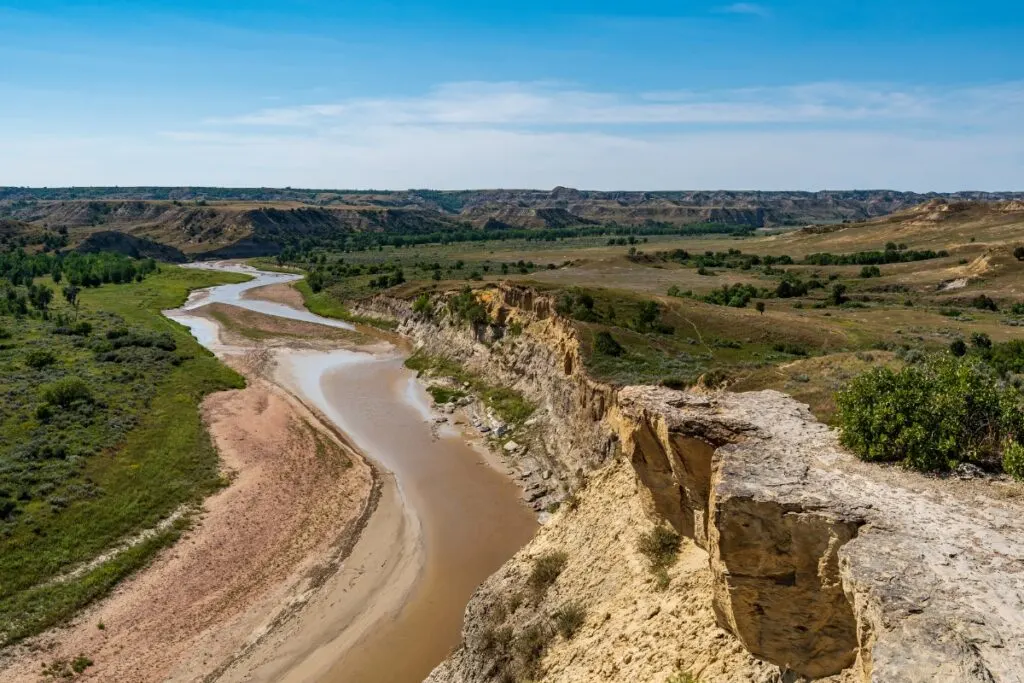
If you are interested in checking out the best rockhounding tools you can find them by clicking here (Amazon link).
What Rocks Are Found in North Dakota
There are some unique and valuable rocks that you can collect in North Dakota, such as:
Fossils
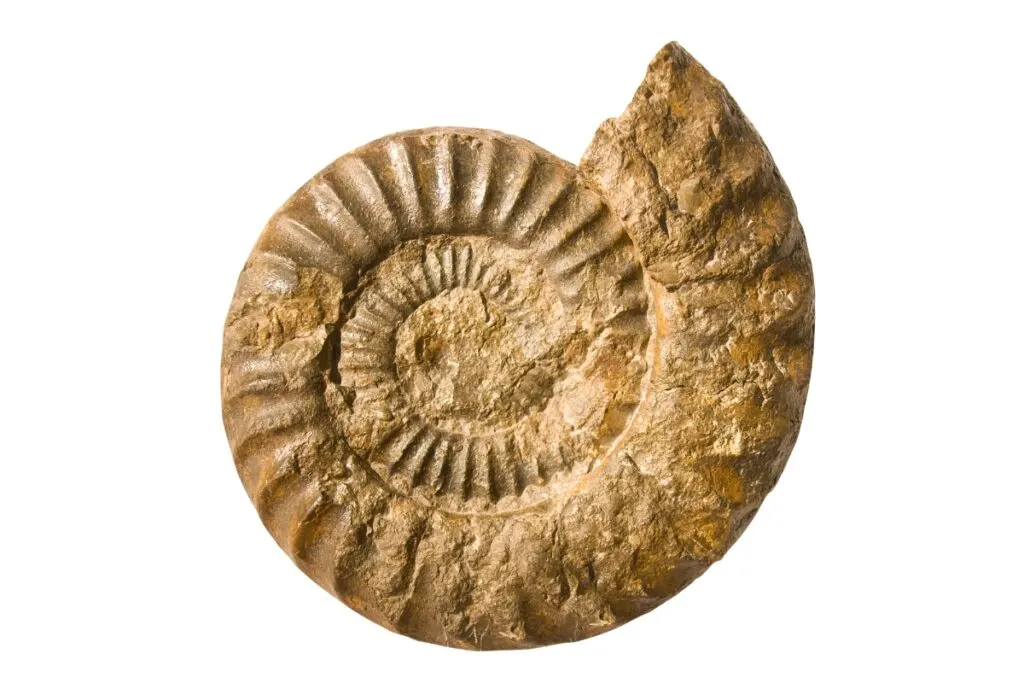
| Location | GPS Coordinates |
|---|---|
| Brule Formation | 47.565447, -102.306392 |
| Chadron Formation | 47.508258, -102.877648 |
| Bullion Creek | 46.695302, -103.642783 |
| Slope County | 46.456857, -103.419565 |
| Red River | 48.265151, -97.133964 |
| Fox Hills Formation | 46.154174, -103.451325 |
| Hell Creek Formation | 48.621672, -103.428826 |
Although the dinosaur and T-Rex fossils are the most famous fossils in North Dakota, there are fossils from four eras in this state: the Eocene/Oligocene era, the Paleocene era, the Quaternary era, and the Cretaceous era.
The Eocene/Oligocene era occurred more than 50 million years ago, and the fossils from this era resemble the animals and creatures that are in existence today, such as turtles or deer. The Brule and Chadron Formations are two areas overflowing with fossils from this time period.
The Paleocene Era occurred between 55 and 65 million years ago, and during this time period, sediment and gravel flowed from the Rocky Mountains to Western North Dakota, creating many of the waterways that presently exist.
The majority of the fossils from the Paleocene Era are aquatic creatures, which range from small mollusks to large champosaurs. You can search for these fossils near Bullion Creek and Ludlow.
If you want to collect fossils from the Ice Age, then you’ll need to locate fossils from the Quaternary Period. This era occurred over 2 billion years ago, and you uncover all sorts of extinct creatures, such as mammoths, ground sloths, and mastodons. Check out the Red River for fossils from the Quaternary Period.
The Cretaceous Era is home to the renowned dinosaur fossils that reside in North Dakota. This time period occurred over 65 million years ago and contained fearsome dinosaurs, including triceratops and T-Rex.
While these two fascinating dinosaurs are amazing finds, it’s more common to discover fish and smaller reptiles. The Fox Hills Formation and the Hell Creek Formation are the two areas to visit for Cretaceous fossils.
All the locations for the fossils from each of these eras are listed above. However, keep in mind that fossils turn up all over the state, so no matter where you go, keep a lookout for these collectibles!
Agate
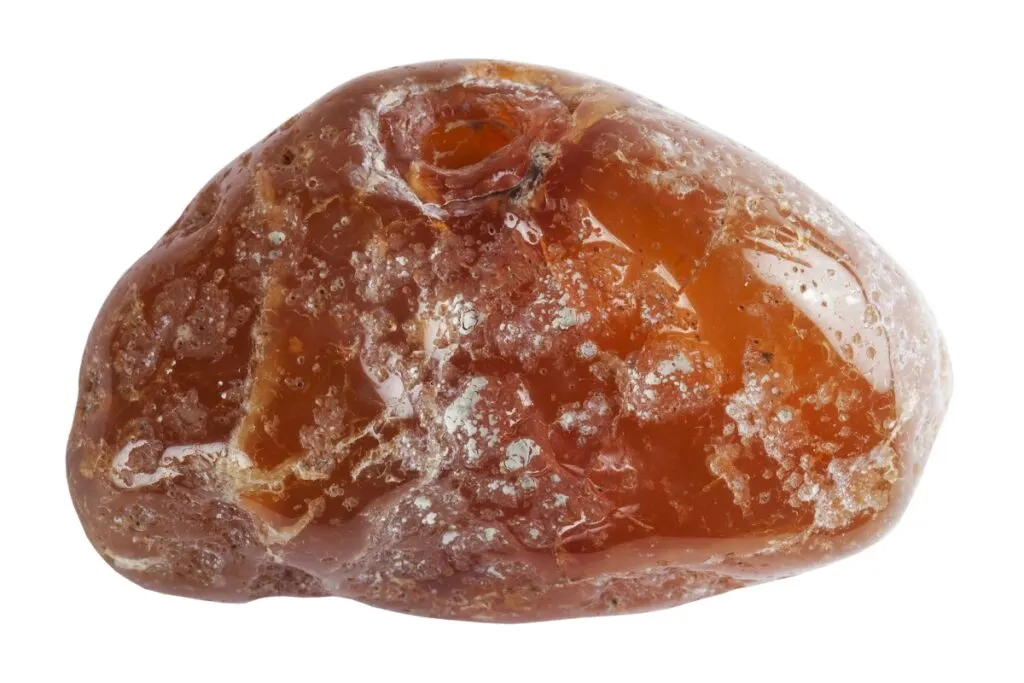
| Location | GPS Coordinates |
|---|---|
| Cannonball River | 46.366741, -100.942438 |
| Souris River | 48.172014, -101.168400 |
| Turtle Mountain | 48.851104, -99.789262 |
| Little Missouri River | 46.984416, -103.491345 |
| McKenzie County | 47.976966, -103.441409 |
| Cedar Creek | 46.095531, -101.325382 |
You can find agates in almost every U.S. state, and North Dakota is no exception. Banded and moss agates are the most common, but you can also find rarer varieties, such as Montana Moss Agates.
Another form of agate that exists in this state is agatized wood, which is essentially a combination of agate and petrified wood.
The best rockhounding sites for agates in North Dakota are its rivers and creeks. For Montana Moss Agates, swing by McKenzie County near the Little Missouri River. For agatized wood, Cedar Creek is the place to be.
Recommendation box: All tools and equipment you need for rockhounding and rock identification* (Amazon links):
1. Estwing Rock Hammer – Light, comfortable, and extremely durable hammer.
2. Estwing Geologist Pick – Classic and the most trusted paleo pick in the world.
3. Finder 12-inch Chisels – Heavy-duty chisels set with hand protection.
4. Mini Handle Shovel – This is a great tool for digging deep in the dirt.
5 Ironclad Utility Work Gloves – Breathable, but they also protect the areas requiring them most.
6. 3M Safety Glasses – Comfortable and efficient goggles for rockhounding.
7. Convoy 8+ UV Light – 365nm UV LED flashlight with a patented glass filter.
8. Wesley’s Jewelers Loupe – High magnification options (30X and 60X) with carrying case.
9. Mohs Hardness Kit – A specially designed kit for rockhounds
*All recommended products are personally tested and regularly used by experts from this website.
Petrified Wood
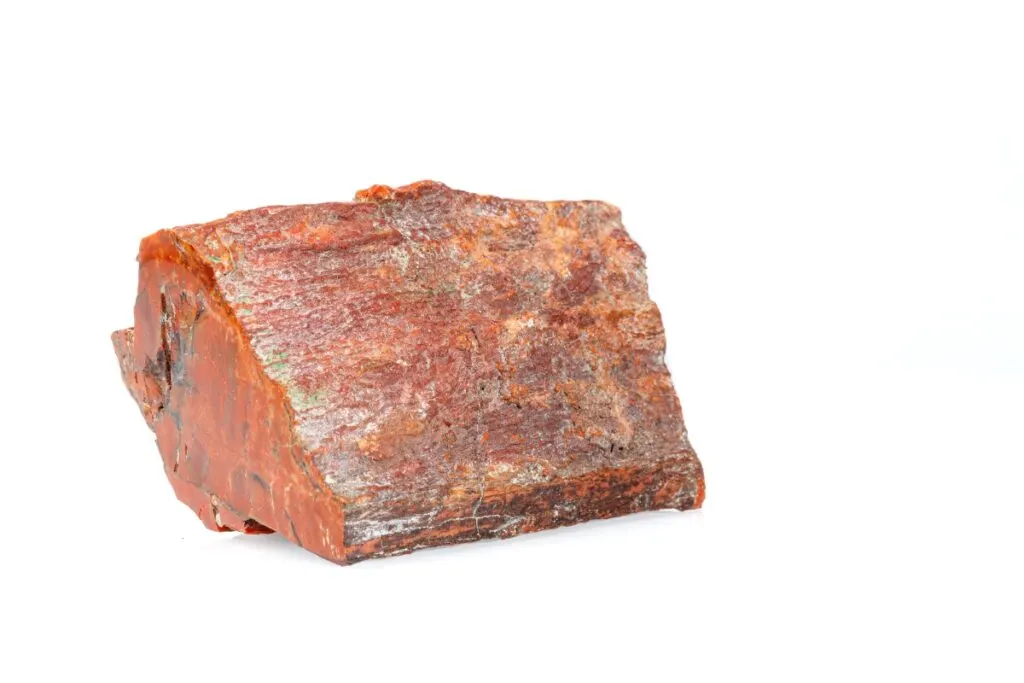
| Location | GPS Coordinates |
|---|---|
| Little Missouri River | 46.984416, -103.491345 |
| Cannonball River | 46.366741, -100.942438 |
| Hettinger County | 46.359245, -102.195114 |
| Mandan | 46.839769, -100.867199 |
| Lisbon | 46.447964, -97.693479 |
| Medora | 46.913439, -103.529721 |
| McKenzie County | 47.976966, -103.441409 |
During your travels in the Peace Garden State, you might run into a unique type of petrified wood called Toledo Petrified Wood. This type of petrified wood has tiny holes that were created by clams, and it’s popular in the rockhounding community due to its unique appearance.
Mandan and Lisbon are two must-see areas of North Dakota if you want to collect Toledo Petrified Wood.
TIP: The demand for natural petrified wood created the appearance of numerous fakes. Check out the main differences between real and fake petrified wood in the article below:
Real vs. Fake Petrified Wood: Focus on These 10 Differences
Flint
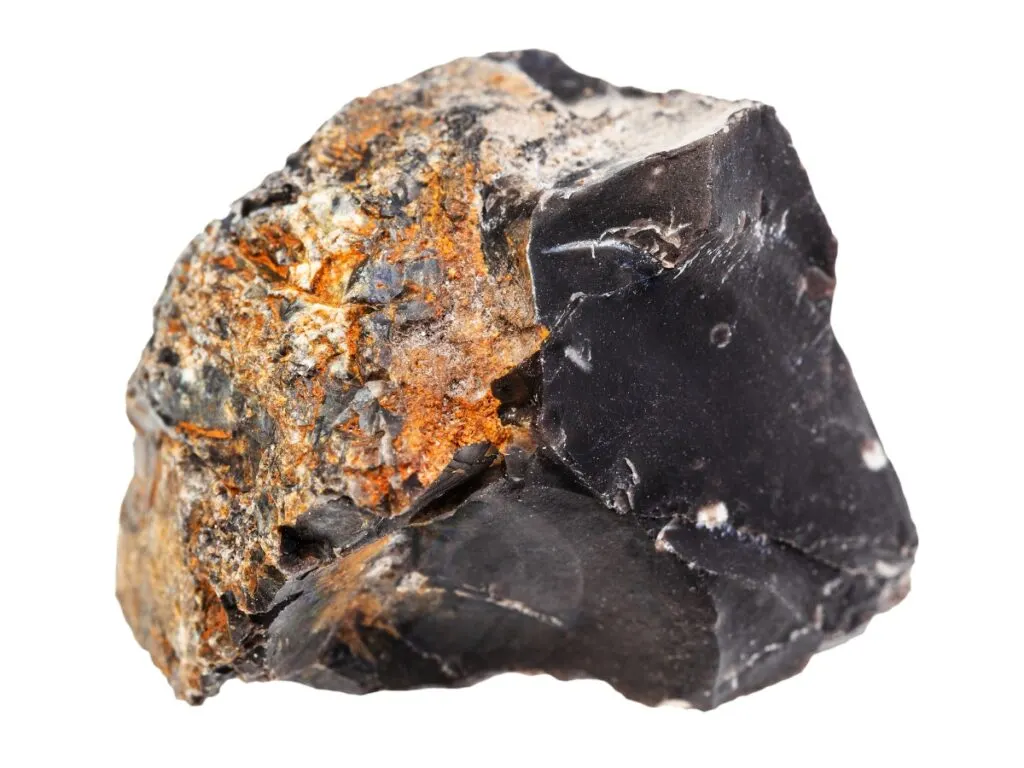
| Location | GPS Coordinates |
|---|---|
| Mandan | 46.839769, -100.867199 |
| Killdeer | 47.363171, -102.752991 |
| Golden Valley | 47.288190, -102.075025 |
| Spring Creek | 47.286560, -102.106596 |
| Dunn | 47.520950, -102.501400 |
| Mercer | 47.486183, -101.745393 |
Flint and chert are both common finds in North Dakota, especially near the streams and gravels of the state. One famous type of chert that’s retrieved from this state is called Knife River Flint, which was the preferred material for local Native Americans when they crafted tools and knives.
There are many locations in North Dakota that contain flint, so the easiest way to narrow them down is to decide what type of flint you want to pick up. Gem-quality chert is mined near Golden Valley, while Knife River Flint is commonly discovered in Killdeer, Dunn, and Mercer.
Arrowheads
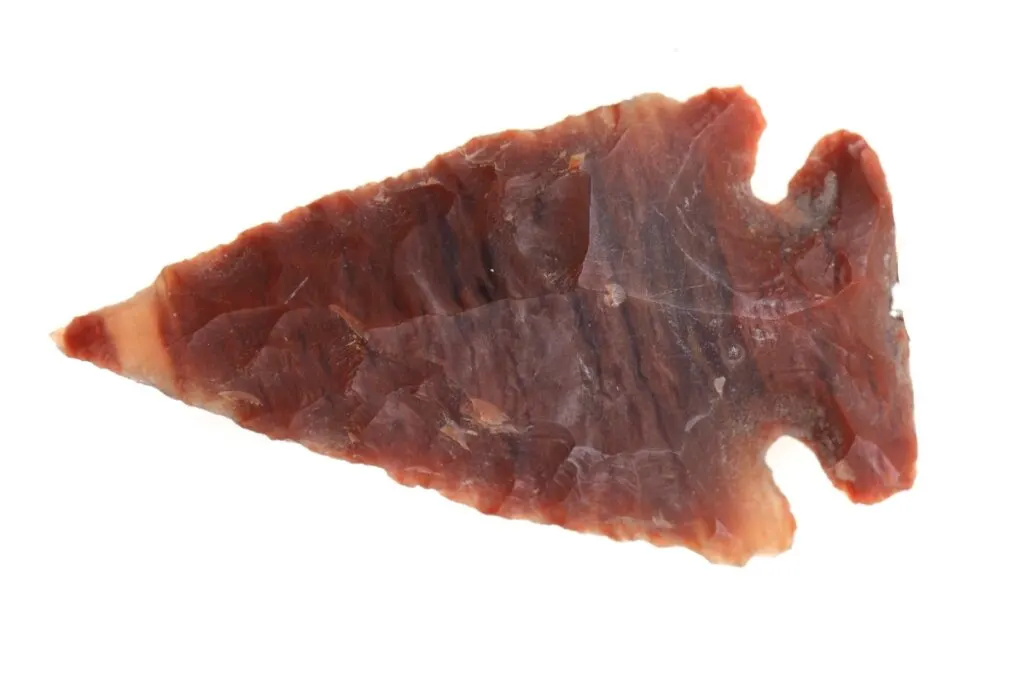
| Location | GPS Coordinates |
|---|---|
| Souris River | 48.172014, -101.168400 |
| Killdeer | 47.363171, -102.752991 |
| Golden Valley | 47.288190, -102.075025 |
| Spring Creek | 47.286560, -102.106596 |
| Dunn | 47.520950, -102.501400 |
| Mandan | 46.839769, -100.867199 |
As briefly mentioned above, many of the Native Americans in North Dakota used flint to craft tools, knives, and arrowheads.
These relics still remain hidden in the sands and gravels of North Dakota, waiting for the right rockhound to find them. Essentially, any location where you find flint in North Dakota might also possess arrowheads or other tools.
The Souris River, Killdeer, Golden Valley, and other areas with flint are prime spots for arrowheads and other Native American artifacts. Check near gravels, sands, and riverbanks for these treasures from the past.
What Minerals Are Found in North Dakota
Although North Dakota might not have as many minerals as its surrounding states, it does have some noteworthy ones, including:
Selenite
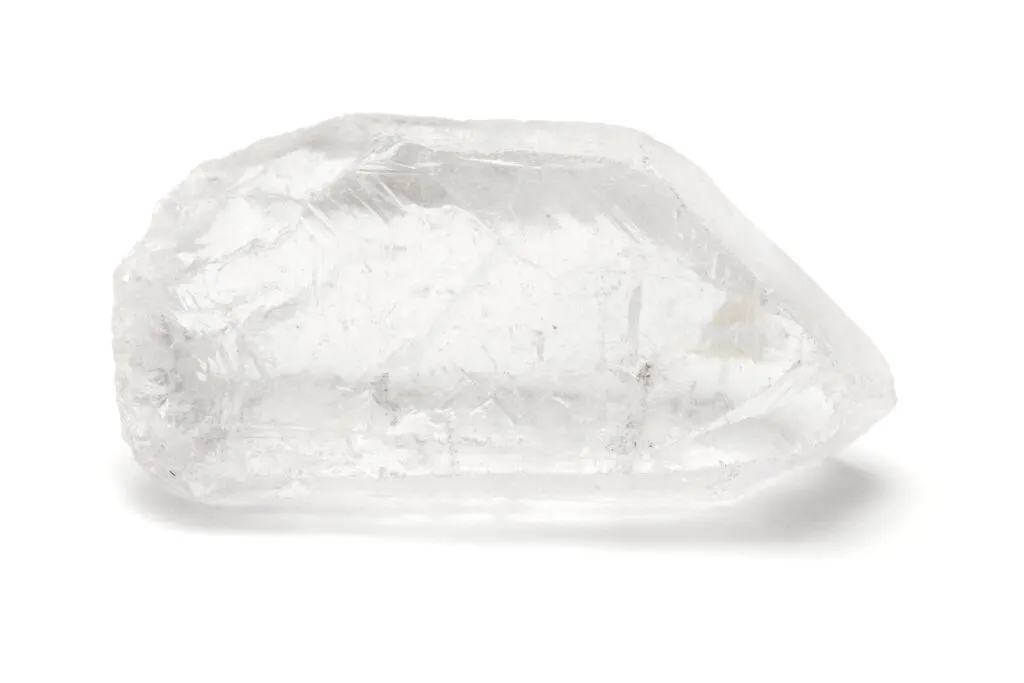
| Location | GPS Coordinates |
|---|---|
| Hettinger County | 46.419602, -102.499909 |
| Richardton | 46.881920, -102.321799 |
| Thirty Mile Creek | 46.362655, -102.276301 |
| West Grant | 46.347774, -102.013115 |
| Cedar | 46.272150, -102.625949 |
| West Stark | 46.669888, -102.921529 |
Rockhounds find gorgeous, high-quality selenite crystals in multiple areas of North Dakota. Selenite can display many colors, but the specimens from this state are typically white and translucent.
Visit Hettinger County to collect high-quality selenite crystals of all sizes. The area near Thirty Mile Creek is also well-known for its selenite.
TIP: Selenite impresses people with its gentle sheen and pleasant chatoyancy. Find out the value of selenite in the article below:
Selenite Value: Main Factors & Prices for Different Units
Gold
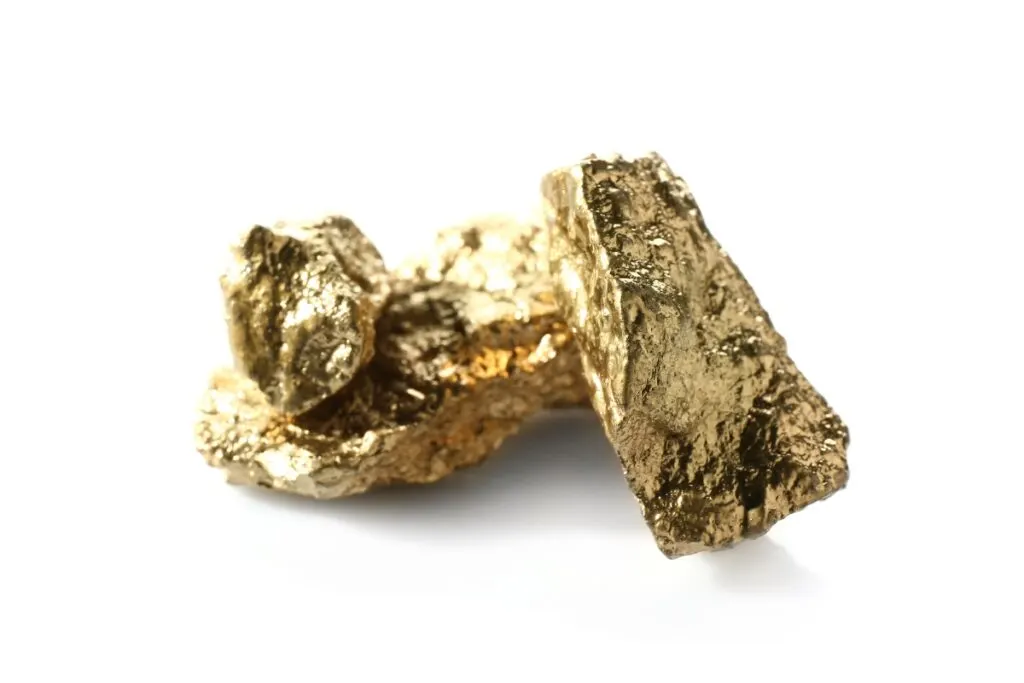
| Location | GPS Coordinates |
|---|---|
| Bowman County | 46.077111, -103.335603 |
| Sheridan County | 47.698031, -100.270645 |
| Ransom County | 46.431419, -97.926517 |
| Grand River | 45.969943, -103.561355 |
| Deep Creek | 46.478345, -103.537086 |
| Red River | 48.259677, -97.137622 |
| Sheyenne River | 46.710022, -96.957564 |
Trace amounts of gold exist all over the Peace Garden State, but large deposits are only discovered in a few locations. This mineral might not be as abundant in North Dakota as in its surrounding states, but you can still pan for small amounts in the rivers and creeks.
Explore the Grand River, Deep Creek, or the Red River for North Dakota gold. The creeks and rivers in Bowman County and Sheridan County might also contain gold.
TIP: North Dakota, a state more commonly known for its agriculture and oil industry, also harbors an overlooked treasure trove of gold. Find out more in the article below:
Gold Prospecting in North Dakota: 4 Best Locations & Laws
Calcite
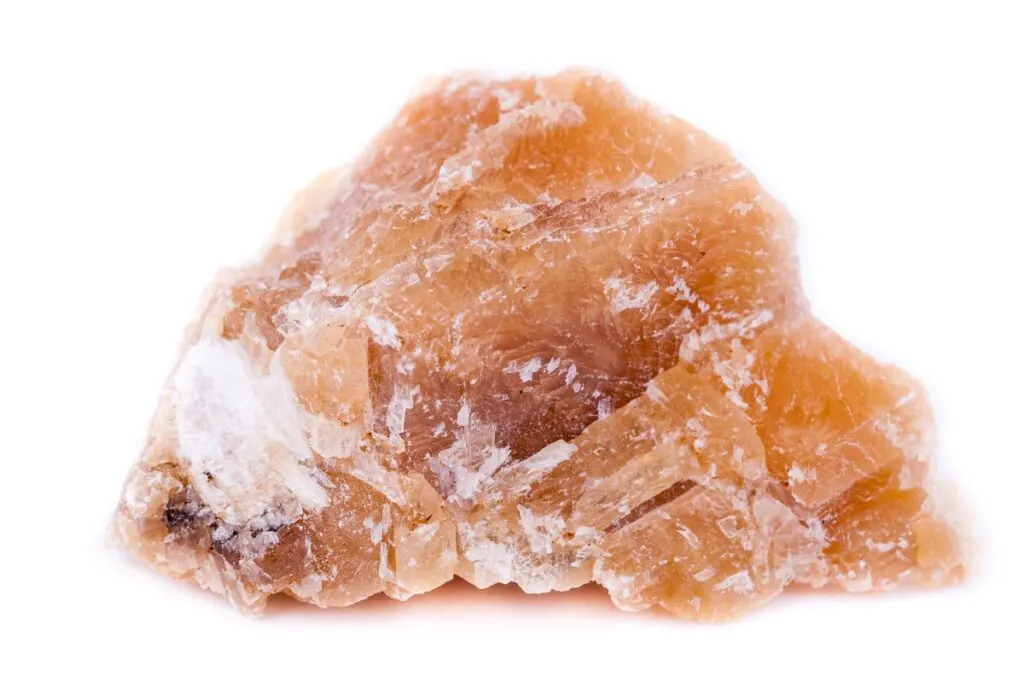
| Location | GPS Coordinates |
|---|---|
| Tongue River | 48.885905, -97.346255 |
| Neche | 48.901960, -97.406442 |
| Red River | 48.920474, -97.222115 |
| Pembina River | 48.943292, -97.345964 |
| Bathgate | 48.880982, -97.481499 |
Calcite crystals are a bit tricky to find in North Dakota, especially since significant amounts of this mineral only exist in one area.
With that being said, it is possible to find small amounts of these crystals in the surrounding areas, and the calcite specimens from this state appear clear, green, or orange.
There is only one confirmed place in North Dakota where you can find calcite crystals, and it’s the Togue River. However, that doesn’t mean you shouldn’t search the surrounding areas and rivers as well, including the Red River and Pembina River.
Aventurine
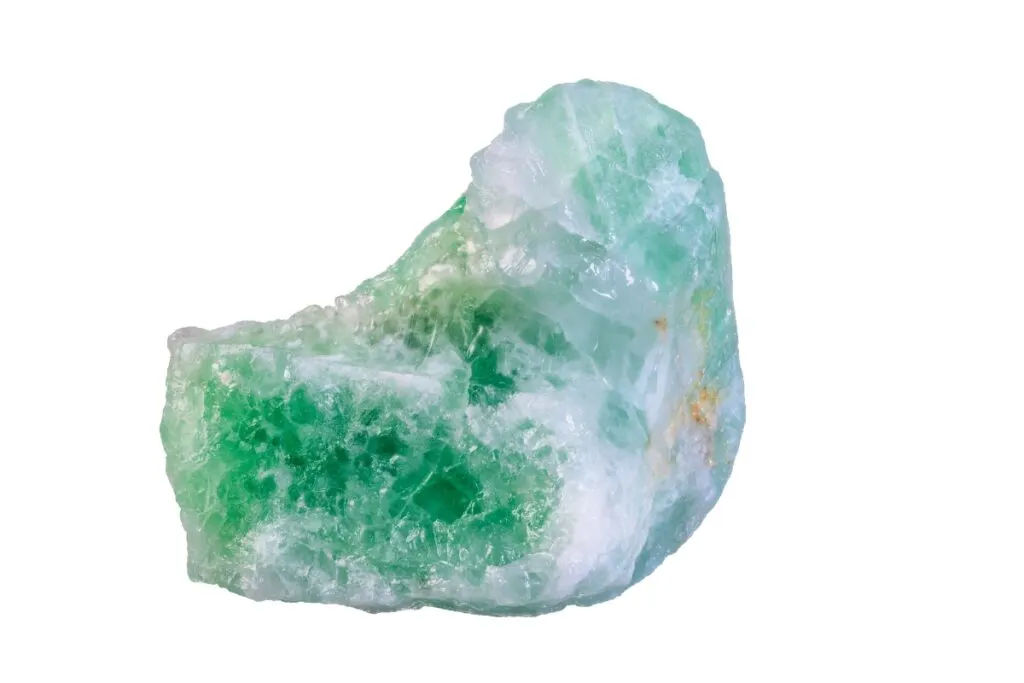
| Location | GPS Coordinates |
|---|---|
| Hettinger County | 46.359245, -102.195114 |
| Thirty Mile Creek | 46.362655, -102.276301 |
| Little Missouri River | 46.984624, -103.490167 |
| Andrews Creek | 46.915548, -103.706633 |
| North Billings | 47.122952, -103.547238 |
| Ash Coulee | 47.122600, -103.498492 |
There are a few different varieties of aventurine in North Dakota, so you never know which one you’ll find. Aventurine from this state can display red, blue, or green hues, and you can find high-quality pieces of this mineral in Hettinger County.
Hettinger County and Thirty Mile Creek are two of the best sites for aventurine in North Dakota. You can also look near the Little Missouri River and Andrews Creek.
BTW: Do you want to know more about rock and mineral identification? The books listed below are the best ones you can find on the internet (Amazon links):
- Smithsonian Handbooks: Rocks & Minerals
- Gemstone & Crystal Properties (Quick Study Home)
- Ultimate Explorer Field Guide: Rocks and Minerals (National Geographic Kids)
FAQ About Common Rocks & Minerals in North Dakota
Dive deeper into the common rocks and minerals of North Dakota with the following FAQs:
What Rare Rocks Can You Find in North Dakota
North Dakota is famous for its many fossils, but rockhounds can also collect other rare rocks from this state, including agates, jaspers, cherts, agatized wood, and petrified wood.
If you’re visiting the Peace Garden State for its fossils, you’ll be happy to learn that you can find all sorts of ancient fossils all over the state, and many of them date back to the Quaternary Period, Eocene Period, Cretaceous Period, and the Paleocene Period.
Additionally, North Dakota is one of the places in the U.S. where rockhounds can pick up Toledo Petrified Wood, which is petrified wood with small holes that create unique patterns.
The Red River, Souris River, and Little Missouri River are some of the top rockhounding sites in North Dakota for rare rocks. Check out the sections above to learn more about each rock and where to find it.
What Rare Minerals Can You Find in North Dakota
There are a few rare minerals that you might come across in North Dakota, such as selenite, gold, and aventurine. Sadly, these minerals are rare, so it might take a bit of effort to find them in this state.
However, some gorgeous selenite crystals have been discovered in Hettinger County, and you can find small traces of gold in certain rivers and creeks, so there are still opportunities for rockhounds to seize.
During your search for North Dakota rare minerals, swing by Hettinger County, Thirty Mile Creek, and the Tongue River. Scroll up for more detailed locations and information on the minerals of this state.
What is the Most Famous Rock or Mineral Found in North Dakota
The main reason why rockhounds travel to North Dakota is for its fossils. From giant T-Rex bones to impressions of small insects, there’s a whole world of fossils waiting to be discovered in this state.
A wide variety of fossils exist in this state, which is the main reason why it’s a fan-favorite for rockhounds who enjoy collecting fossils. Wolly mammoths, dinosaurs, sea creatures, extinct animals, and unique plants are just a few of the things you might run into during your North Dakota travels.
It’s true that fossils exist all over North Dakota, but if you are searching for something from a specific era, it’s best to narrow down your target areas. Take a look at the fossils section of this post for specific locations and where to find fossils from each time period.
Conclusion
Although North Dakota might not have a lot for rockhounds in quantity, it makes up for this with its quality. From the Peace Garden State, you can pick up unique types of petrified wood, high-quality selenite crystals, and fossils of all shapes and sizes.
So, don’t cross North Dakota off your rockhounding itinerary just yet; some of your best finds might be waiting for you in this state!
TIP: Rockhounding in North Dakota is very rewarding due to the state’s high-quality specimens that can be found with relative ease. Check out the complete guide in the article below:
Best Rockhounding Sites in North Dakota & What You Can Find
